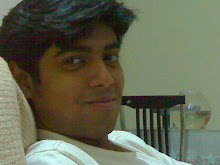The fear factor
My Sunday Editor Ayaz Memon did well by listening to his friend’s advice. This is not the right time for Mumbai Muslims to sport a beard or a skull cap or anything for that matter that distinguishes them as Muslims. Post 7/11 blasts, there is an undercurrent of communal tension in the city. It erupts from time to time as Mumbai Mirror reported today.
Beaten up for no reason
Aditi Sharma, Mumbai Mirror, July 17
Even a week after the incident, Hamid Pir Mohammed Ghojaria (39) is yet to recover from the shock of being assaulted on a running train between Marine Lines and Churchgate railway stations for no fault of his.On that day, the Jogeshwari resident had gone to Marine Lines to submit his son’s college admission forms at Ismail Yusuf Trust. After completing the formalities, he decided to visit his brother-in-law who owns a watch shop near Churchgate. Around 5.15 pm, he went to Marine Lines railway station to catch a Churchgate-bound local.“As soon as I entered the train, I saw some commuters beating up a Pathani-clad man. Even before I could realise what was happening, two of the commuters saw me and started hitting me as well. They just kept saying ‘get out of this country, go back to Pakistan, you do not belong here, you are the ones responsible for the blasts in the city’,” says a shocked Ghojaria.The watch repair mechanic was all the more stunned when he was asked to take the name of Lord Ram and Lord Krishna. “When they started hitting me, I screamed ‘Allah’. That’s when they told me to call out to Ram and Krishna instead. They said they wouldn’t let go of me if I did not chant the names,” alleges Ghojaria adding that the mob even pulled his beard. The abuse stopped only when the train reached Churchgate terminal.“Nobody came forward to help me. I felt utterly helpless throughout. When the train came to a halt at Churchgate, all the commuters, including the attackers, simply walked away,” adds Ghojaria. After alighting from the train, he reported the matter to the police at the station, who first sent him to GT Hospital for a checkup and later registered a case under Sections 323 (voluntarily causing hurt), 325 (voluntarily causing grievous hurt) and 34 (common intent) of the Indian Penal Code against unknown persons in Ghojaria’s case. “Investigations are on, we should be able to locate the men soon,” Deepak Bagwe, senior inspector, railway police, Churchgate told Mumbai Mirror.
SECOND CASE OF ASSAULT: The other person who suffered a similar kind of assault was Malad resident Abdul Aziz Kandhal (34), a mobile accessories salesman. On that day, he was on his way to Marine Lines from Kandivli. “The train halted abruptly for 10 minutes outside Elphinstone station around 5 pm. Somebody started screaming that there was a bomb on the train. A majority of the passengers jumped off the train. I stayed put and continued to chant with my rosary beads,” he says.A few minutes later, some of the men sitting around Kandhal became abusive. “They said I was the one who must have planted the bomb. I tried not to react, but they hit me anyways. Seven-eight of them pounced on me, snatched my beads and started hitting me ruthlessly,” he says. Soon the train started moving and reached Mumbai Central.“I somehow managed to run away from the assailants and get off the train. I don’t know what those men would have done had a I sat in there a little longer,” says a visibly-shaken Kandhal. Immediately after getting off the train, he claims to have approached a policeman, who simply said there was nothing he could do to help. Scared and terrified, Kandhal abandoned his trip to Marine Lines and returned home.

